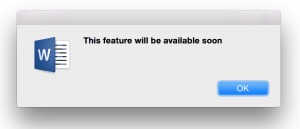Striking Gold with Copper in the Data Center
10G Ethernet (10GbE) is a very popular interconnect technology in today’s data center. It’s widely used for servers/storage devices connecting to top-of-rack (leaf) switches, as well as connecting those leaves to the aggregation (spine) switches. According to a Dell’Oro Ethernet Switch Market report published in 2014, 80% of server connections will be 10GbE-based by 2018.
In general, two types of physical media are used in 10GbE interconnects: fiber and copper. For intra-rack (server/storage to leaf switch) connections, most deployments use copper cabling as it is the most cost effective for short distances within the rack.
There are two copper cable types: twinax and twisted pair. Twinax is used in the 10GBASE-CR standard in the DAC (direct attached cable) format, which is a fixed length cable with SFP+ plugs integrated into both ends. Twisted pair, on the other hand, is something that should be very familiar to every IT person. Remember CAT cables and RJ-45? The 10GbE interconnect standard that uses twisted pair is 10GBASE-T, which is officially defined in the IEEE 802.3an standard.
10GBASE-CR with DAC is great and used in many deployments. However 10GBASE-T over twisted pair offers some unique benefits:
Distance & Interoperability
10GBASE-T over twisted pair Continue reading
The ‘Why Talented Employees Stay’ Listicle – ORLY?
I’ve seen a list entitled “Why Talented Employees Stay” floating around Twitter. The list has been bothering me, because I don’t think it’s quite…right. The list is interesting, but I don’t believe it tells the whole story. Taken at face value, I think the list could even make it more difficult to retain certain people — not less.When Worlds Collide: Digging Deeper
Now that some basic definitions of these new approaches to implement LTE in unlicensed spectrum can be agreed, delving deeper into the colliding worlds of licensed and unlicensed band services, it’s important to understand how these technologies might be deployed...Office Word 2011 – An Annoying Little Bug

Today I take a gentle swoop away from networking into the world of documentation. Specifically, I’m looking at a bug in Microsoft Office Word for Mac that drives me bonkers.
Custom Properties
The management of custom properties in Microsoft Word has never been the most elegant part of Word’s interface. The mechanism by which the property values are managed has always been a bit clunky and unfriendly, but at least in the Windows version of Word, it at least functioned as stated.
In Office for Mac however, there’s a bug when you select a property to edit. Since it’s easier to show than tell, here’s a quick video demonstrating the issue.
Now isn’t that a silly bit of coding? Yes, I thought so too! Microsoft just announced availability of the Office 2016 Mac Preview, but sadly Document Properties is not yet available:

If you find out before I do, please let me know!
If you liked this post, please do click through to the source at Office Word 2011 – An Annoying Little Bug and give me a share/like. Thank you!
Decide!
Last week we talked about orienteering — using models and information to orient ourselves to what’s going on in the network. This is part of the OODA loop, which we talked about two weeks ago. This week, let’s look at the next step — decide.
In fact: Decide! Now! How many hours have you spent thinking through what to decide? Which car to buy, which house to buy, which vacation to take, which… It seems like our life is a continuous stream of decisions through which we must dig deeply to make a choice. Sometimes it makes you want to replace your entire outfit with grey and black. Everything. Actually, we should feel blessed to have so many decisions — at least we’re not considering “eveningvear…” (note the ever fashionable flashlight).
But the last place you want to be is in the middle of a major network outage or attack, spending hours deciding — what was it we were deciding? By the time you get to the fifth pizza and the tenth box of bonbons, maybe you’ve forgotten what you are sitting in that “war room” for. There is another alternative, of course.
Decide what you’re going to decide before Continue reading
